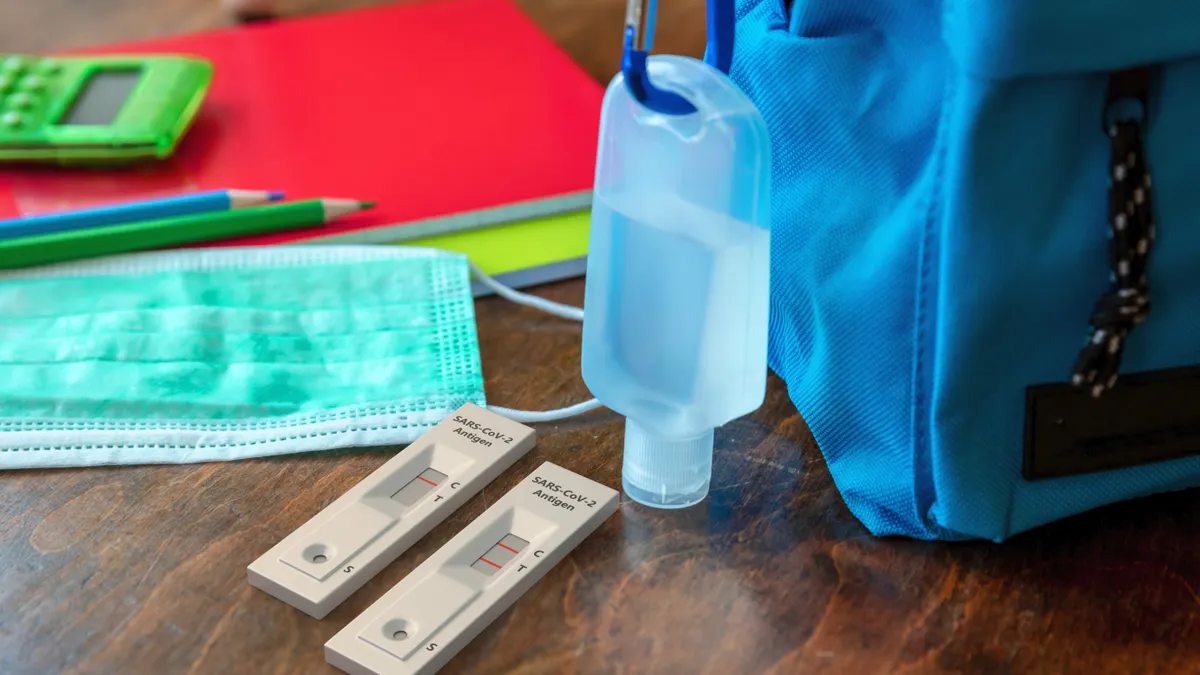As students and staff return to campuses after winter break, some schools are on heightened alert with respiratory illnesses rising in their communities.
In Maryland's Montgomery County Public Schools, a health update issued Tuesday from Dr. Patricia Kapunan, the district's medical officer, said that while the district is in a "better place" compared to last year's cold and flu season, rates of COVID-19 and the flu continue to increase.
Additionally, Kapunan said guidance from the Maryland Department of Health "strongly recommended" masks for health room staff in schools. "Health is about more than not getting sick, and we are best able to learn, teach and support each other when we feel well," Kapunan said.
New York's Watertown City School District Superintendent Larry Schmiegel also urged his school community to follow health guidelines as school resumed this week. In a Monday letter to students, staff and families, Schmiegel said that due to increased flu and COVID cases locally, it was recommended that people frequently wash their hands, practice sneezing and coughing etiquette, stay home when sick and avoid close contact.
"Your cooperation in adhering to these guidelines is vital in maintaining a healthy and safe environment for everyone in our school community," Schmiegel said.
While some communities are currently experiencing a rise in respiratory illnesses, the trend doesn't seem to compare to the disruptions schools experienced from illnesses in fall 2022. During that period, a "tripledemic" of COVID, flu and RSV, caused some schools to pause in-person learning or revert to pandemic-era protocols for safety and learning.
Gearing up after break
According to data from the Centers for Disease Control and Prevention, national emergency department visits for ages 5-17 for combined respiratory illnesses showed a sharp uptick in early December but began trending downward by the last week of the month. This CDC dataset monitors COVID, the flu and respiratory syncytial virus, known as RSV.
The CDC offers several resources for school administrators for a flu pandemic, including a before, during and after checklist to minimize illnesses.
Kate King, president of the National Association of School Nurses, said the association's COVID resources for school nurses can also be a good reference for preventing and minimizing the spread of respiratory illnesses.
King, who is also a middle school nurse in Ohio's Columbus City Schools, said that even before school resumed this week in her district, school nurses were fielding calls from a few parents whose children felt ill — a typical pattern after indoor holiday gatherings.
"I would say some school nurses have those conversations, and we just know that we gear up for at least that first two weeks back from break because people have been in groups for the holidays with other people," King said.
While school nurses don't diagnose illnesses, they can assess and care for students and are key to monitoring increased rates of illnesses in school, King noted.
"If people call and tell me their kid has the flu or COVID, school nurses are always, always monitoring that communicable disease," King said.
If school nurses see patterns, trends or outbreaks, that's when they alert local health departments or other agencies. That doesn't necessarily mean schools will close, but it does allow nurses and health officials to increase prevention and response activities, King said. For schools without nurses, this is harder to do, she added.
School nurses and other health officials are also encouraging vaccination against respiratory illnesses, King said.







 Dive Awards
Dive Awards





